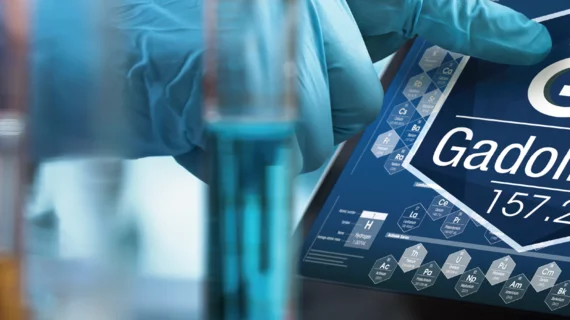Gadolinium debate rages on, with radiologist questioning recent GBCA liability guidance
A Rhode Island radiologist pushed back against a recent JACR letter to the editor that he believes promotes “severe and unsubstantiated” conclusions related to gadolinium-based contrast agent administration.
Jeffrey Rogg, MD, with Rhode Island Hospital in Providence, says the argument penned Monday by a trio of experts puts institutions at increased legal risk in suggesting gadoteridol (Prohance) is the “safest and best” GBCA, he wrote.
Rogg claims this assertation runs contrary to American College of Radiology contrast committee and Food and Drug Administration positions and notes the conclusions are based primarily on Bracco Pharmaceutical-backed scientific research.
“In my mind, the benefit of gadoteridol in terms of brain deposition is not clear and should not be stated as such,” Rogg wrote July 9 in JACR. “I believe that Harvey et al. increase our risk through their strong statements, which ignore the frailty of the facts and disregard the published positions of both the AMA and the ACR.”
H. Benjamin Harvey, MD, a neuroradiologist at Massachusetts General Hospital, and co-authors responded Thursday, defending their position in the ACR’s imaging journal.
The group, which includes another doctor and lawyer, argue some of Rogg’s points “conflate” legal risk with health risk, saying: “To be clear, we did not claim that one GBCA was safer for a patient than another. In fact, we drew attention to the lack of clinical data to support even the existence of gadolinium deposition disease.”
In addressing the industry-backed research, Harvey and colleagues say they did not selectively ignore data, but rather cited evidence focused on gadolinium retained within a two-month window, which, by definition, is the window required for gadolinium deposition disease symptoms to arise, they explained.
And in terms of ACR and FDA guidance, the authors claim such organizational opinions are “unlikely to act as an infallible liability shield in potential GDD litigation.”
In their concluding remarks, Harvey et al. called on the industry to fund double-blinded studies to “put this issue to rest,” suggesting such efforts are not difficult to complete and may finally reveal that GDD does not exist.
“From a patient safety standpoint, an organization should feel absolutely comfortable using any of the GBCAs on the market, linear or macrocyclic,” the authors added. “However, from a risk management standpoint, in light of the current gadolinium retention data and what has been published about the controversial entity of GDD, we continue to believe that gadoteridol should be the default GBCA for MRI."
Related MRI Contrast Agent Safety Content:
A deep dive into gadolinium-based adverse reactions
Allergic reactions to iodinated CT contrast increase likelihood of sensitivity to GBCAs
Researchers detail data on gadolinium-related adverse reactions
Radiologists must take a data-driven approach to discuss gadolinium, mitigate liability risk
Radiologists see potential to reduce GBCA administration with new synthetic MRI technique
Gadolinium-based contrast agents are safe, even at higher doses, new research suggests
Gadolinium debate rages on, with radiologist questioning recent GBCA liability guidance
ACR committee proposes new term for symptoms associated with gadolinium exposure
Closing the knowledge gap on gadolinium retention risks
Radiologists find direct evidence linking gadolinium-based contrast agent to higher retention rates
AI software that eliminates need for gadolinium contrast during imaging exams wins patent
Research may offer new method to detect GBCA on MRI
Radiology, other multispecialty groups urge caution with GBCAs during interventional pain procedures
Cardiac MRI contrast agents are low-risk and safe for ‘overwhelming’ majority of patients
Health orgs publish special report about gadolinium retention, GBCA use in imaging
Rodent brains retain gadolinium after repeated administration of GBCA a year after injection
Advanced MRI mapping spots traces of gadolinium in the brain invisible during conventional scanning
Radiologists should keep patients’ best interests in mind to mitigate gadolinium liability risk

